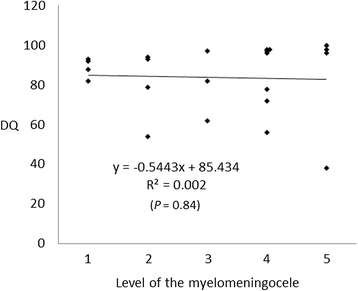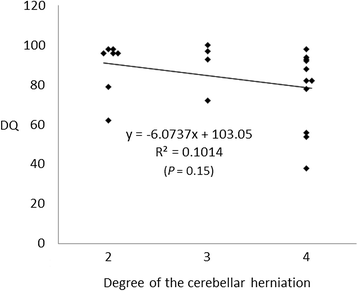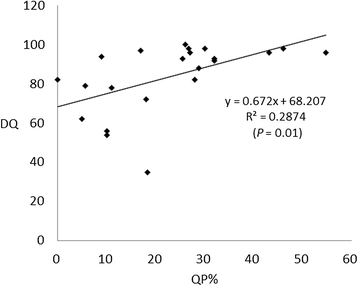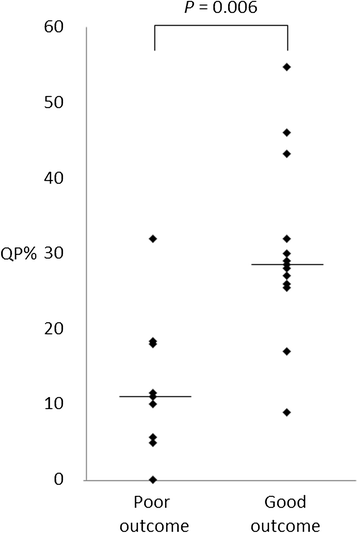Neurological outcomes in Chiari type II malformations and their correlation to morphological findings and fetal heart rate patterns: a retrospective study
- PMID: 25890237
- PMCID: PMC4349618
- DOI: 10.1186/s13104-015-1014-2
Neurological outcomes in Chiari type II malformations and their correlation to morphological findings and fetal heart rate patterns: a retrospective study
Abstract
Background: Correlations among Chiari type II malformation (CMII) morphological findings, the proportion of fetal heart rate patterns corresponding to the quiet phase (QP), and neurological outcomes have yet to be investigated.
Findings: The correlations among the morphological findings (i.e., the degree of ventriculomegaly, myelomeningocele levels, and degree of cerebellar herniation), proportion of time spent in QP, and developmental quotients (DQs) were analyzed in 22 children. The proportion of time spent in QP was compared between children with poor neurological outcomes (n = 9) and those with good outcomes (n = 13). Pearson's correlations and the Mann-Whitney U-test were used to assess for statistical significance; P < 0.05 was considered statistically significant. No significant differences were observed between the DQs and morphological findings, but the DQs and the proportion of time spent in QP were significantly correlated (r = 0.287, P = 0.01). The proportion of time spent in QP was significantly different between children with poor outcomes and those with good outcomes (median, 11% [range, 0-32%] vs. 28% [range, 2-55%]; P = 0.006).
Conclusions: The proportion of fetal heart rate patterns corresponding to the QP might be a useful predictor of neurological outcomes in 2-year-old children with CMII.
Figures





References
Publication types
MeSH terms
LinkOut - more resources
Full Text Sources
Other Literature Sources
Medical

